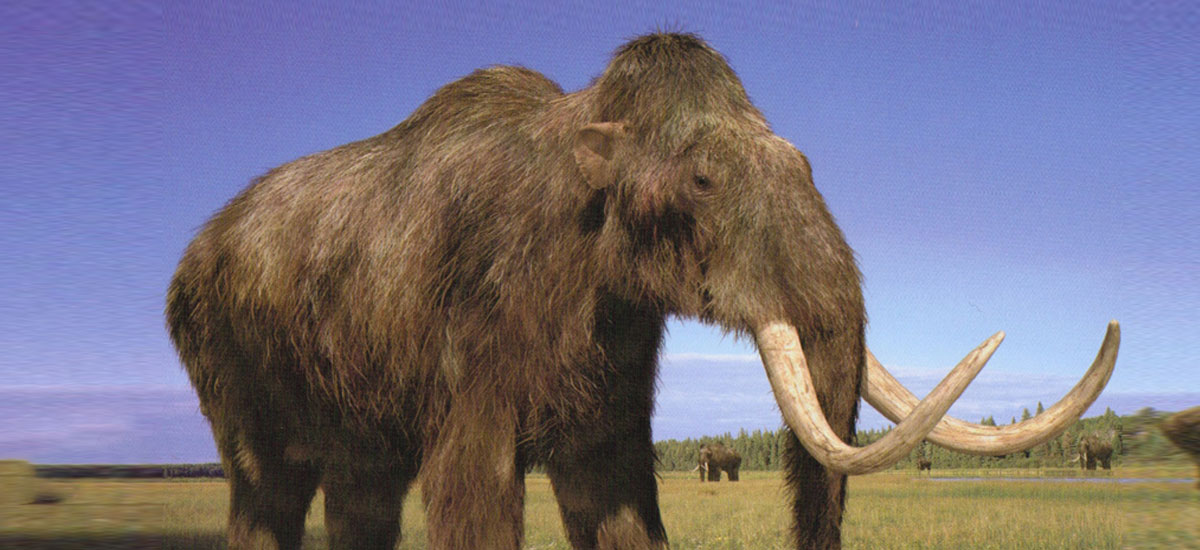We are approaching the first resurrection of the mammoth. Sultry elephants with help

Combined forces of Russian and Japanese scientists managed to wake up mammoth cells with the grateful name of Yuka, which approx. 28 thousand. years ago he was hibernated in the area of today's Siberia.
Let's start from where the scientists got the mammoth in good condition. It happened in 2012, when during research work in Siberia, in areas covered with permafrost, scientists encountered a perfectly preserved body of one of the representatives of this ancient species. Mamut was baptized by the name of Yuka and he waited quietly for the further development of genetic engineering.
Resurrection of mammoth - act I
Since 2012, a lot has changed. Scientists are increasingly coping with gene editing and mixing of cell components, thanks to which the team under the direction of Dr. Akira Iritani has attempted to transplant mammoth nucleotides (DNA components) into mouse oocytes. Oocytes are such cells whose main task is to manage the embryonic development process.
In short, it was supposed to work in such a way that mouse cells fed with mammoth data would begin to pupate into the basic components of the mammoth. The whole description is of course very simplified, because few people will be interested in information about division spindles, metaphases and depolymerization of such or other molecules. Of course I am willing to refer you to a scientific publication on this topic .
There were a few problems
The genetic material collected from Yuko, although archaeologically has been preserved perfectly, turned out to be ... very incomplete. Modified mouse cells, observed under the microscope, showed basic activity, but nothing in the world could lead to division. Iritani dumps this on defragmentation of cellular material, which means as much as very broken DNA.
https://twitter.com/hurst_sj/status/1105425803863646208
The only solution to this problem seems to be the laboratory edition of the mammoth code and the missing parts of the elephant DNA chain. Such a hybrid, if it could be created at all, would not be a 100% mammoth, and a genetically modified representative of the latter species.
This does not mean, of course, that such an experiment does not make any sense. The only question is, what would the mammoth genes that actually managed to live up to our times correspond to? Scientists have a lot of hope in this matter. Starting with the belief that it will be possible to breed a elephant-mamma hybrid that resembles the second species to the illusion, until the reproduction of genetic instructions that allowed mammoths to live in a very unfriendly environment. You know, eternally negative temperatures, poor food availability - etc.
With even more fantastic assumptions: many scientists and investors are interested in the subject of the resurrection of mammoths due to the belief in finding the genes responsible for their longevity.
There are several species living in the world that do not die of old age. Perhaps you have heard about a painted turtle, Icelandic cyprina or a long-lived pine. Perhaps in the DNA of one of these species we will be able to find a compatible gene that, even if it does not make us immortal, perhaps extends our life expectancy to several hundred years. Most people dream of such a discovery.
One such dreamer is Peter Thiel, co-founder of the PayPal service and one of the richest investors in the Silicon Valley, who like every wealthy man would like to find a way to extend his life. One of such attempts was to invest in the research of George Church from Harvard University. Church also wants to resurrect the prehistoric trumpet. He uses the same idea as Iritani - his team is working on the creation of a genetically modified hybrid.
Church boasted at the American Association for the Advancement of Science, organized in January 2017, that they would be able to resurrect the woolly mammoth in two years at the latest. Well, 2 years have passed and ... mammoths are still gone. The study published by the Iritani team perfectly explain this state of affairs. Genetic material from several dozen thousand years ago turned out to be more incomplete than expected. I would not like to sound like a pessimist, but it seems to me that we still do not have the right technology to resurrect mammoths. Maybe in next two years you will succeed ...
We are approaching the first resurrection of the mammoth. Sultry elephants with help
Comments
Post a Comment